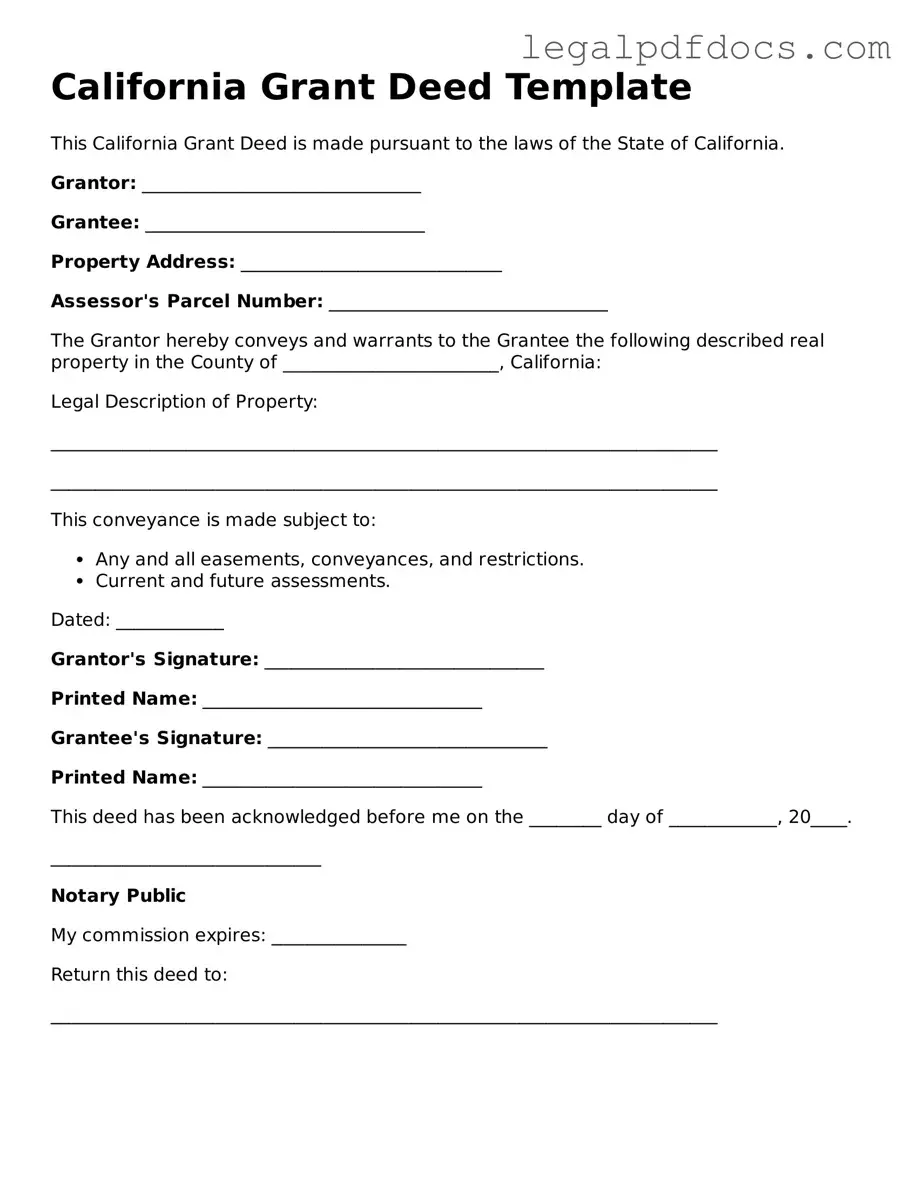The California Deed form plays a crucial role in real estate transactions, serving as a legal document that facilitates the transfer of property ownership. This form is essential for ensuring that the transfer is executed properly and is recognized by the state. Within the deed, key elements such as the names of the grantor and grantee, a detailed description of the property, and the type of deed being utilized—whether it be a grant deed, quitclaim deed, or another variant—are clearly outlined. Additionally, the form requires the inclusion of signatures and may necessitate notarization to validate the transfer. Understanding the nuances of the California Deed form is vital for both buyers and sellers, as it not only protects their interests but also ensures compliance with state laws. By grasping the major aspects of this document, individuals can navigate the complexities of property transactions with greater confidence and clarity.
